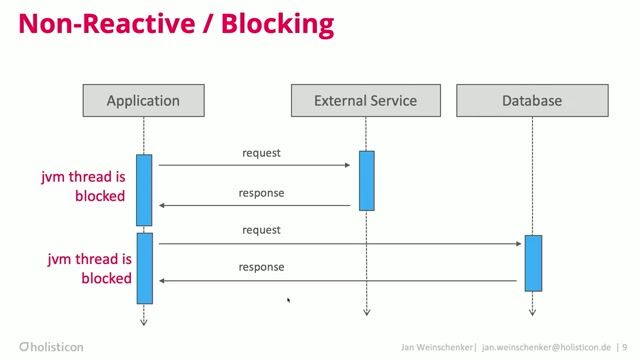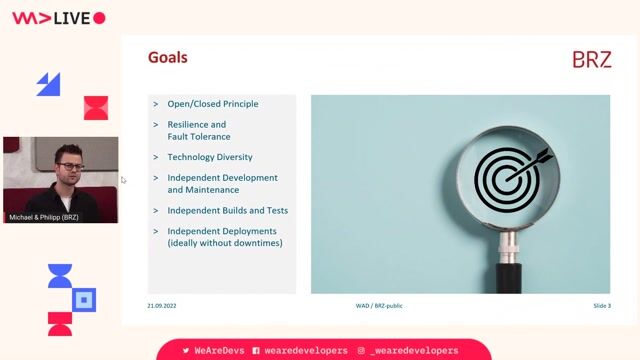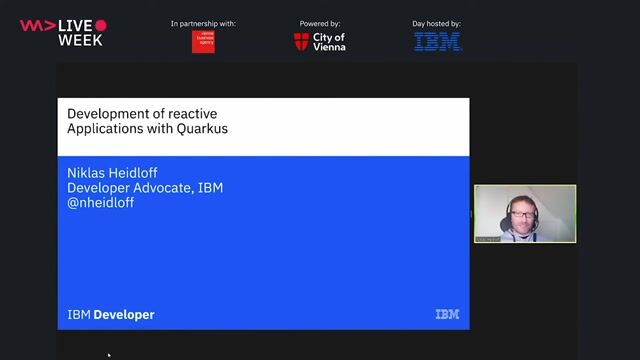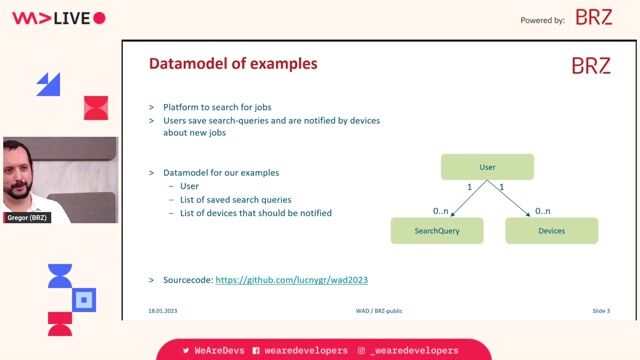Michael Eder & Philipp Frauenthaler
Going reactive with Spring WebFlux
#1about 2 minutes
Comparing Spring MVC and Spring WebFlux models
Spring MVC uses a blocking, thread-per-request model, while Spring WebFlux uses a non-blocking, asynchronous event loop model for better resource utilization.
#2about 3 minutes
A restaurant analogy for blocking vs non-blocking I/O
An analogy of waiters in a restaurant illustrates how the non-blocking model of Spring WebFlux is more efficient than the blocking, thread-per-request model of Spring MVC.
#3about 3 minutes
How the event loop model improves resource utilization
Spring WebFlux uses a small number of event loop threads that handle requests in a non-blocking fashion, preventing threads from waiting idly on I/O operations.
#4about 4 minutes
Core concepts of Project Reactor: Publisher and Subscriber
Project Reactor is built on the Publisher-Subscriber pattern, using Mono for single items and Flux for streams, which only emit data upon subscription.
#5about 7 minutes
Building a reactive API controller with Spring WebFlux
Implementing a reactive controller involves wrapping request and response types in Mono or Flux and using a functional, chained programming style with operators like flatMap.
#6about 5 minutes
Handling blocking I/O and transactions in reactive streams
Calling blocking database operations from a reactive stream blocks the event loop, requiring the use of `subscribeOn` to offload work and breaking standard `@Transactional` behavior.
#7about 6 minutes
Implementing manual transaction management in WebFlux
Transactions in a hybrid reactive application require manual management using `PlatformTransactionManager` and a dedicated single-threaded scheduler to maintain thread context across operations.
#8about 5 minutes
Exploring reactive data access and messaging options
To fully leverage WebFlux, the data access layer must also be reactive, using technologies like R2DBC, Hibernate Reactive, or native reactive drivers for NoSQL databases.
#9about 8 minutes
Lessons from a hybrid reactive and blocking architecture
A real-world job platform demonstrates a hybrid model, highlighting the complexity of mixing blocking and non-blocking code and reinforcing that a fully reactive stack is ideal.
#10about 11 minutes
Q&A: Thread safety, RxJava vs Reactor, and debugging
The Q&A session addresses common concerns, including the importance of thread safety, the similarities between RxJava and Reactor, and the inherent difficulties of debugging asynchronous code.
Related jobs
Jobs that call for the skills explored in this talk.
Featured Partners
Related Videos
 52:24
52:24Slip Through the Boundaries of Legacy Systems with Kotlin and Spring WebFlux
Lukas Georgieff & Alberto Gisbert
 25:41
25:41Side-by-Side: Reactive vs non-reactive Java
Jan Weinschenker
 58:05
58:05Our journey with Spring Boot in a microservice architecture
Michael Eder & Philipp Frauenthaler
 39:10
39:10Development of reactive applications with Quarkus
Niklas Heidloff
 55:30
55:30Java 21: The Revolution of Virtual Threads - A Deep Dive
Christian Woerz
 49:30
49:30Microservices with Micronaut
Moritz Kammerer
 57:38
57:38Are you done yet? Mastering long-running processes in modern architectures
Bernd Ruecker
 54:30
54:30Hibernate: How to keep calm
Philipp Frauenthaler & Gregor Lucny
From learning to earning
Jobs that call for the skills explored in this talk.
Java Springboot + React Developer
Plexus
Municipality of Madrid, Spain
Intermediate
Java
React
Spring
JavaScript
Microsoft Access
+2
Backend Java Spring Developer
Quantion
Municipality of Madrid, Spain
Java
Spring
Docker
Kubernetes
Continuous Integration
FULL-STACK JAVA SPRINGBOOT Y ANGULAR DEVELOPER
VIEWNEXT
A Coruña, Spain
Remote
Intermediate
Java
Kafka
Docker
MongoDB
+2
FULL-STACK JAVA SPRINGBOOT Y ANGULAR DEVELOPER
VIEWNEXT
Municipality of Vigo, Spain
Remote
Intermediate
Java
Kafka
MongoDB
Angular
+1
FULL-STACK JAVA SPRINGBOOT Y ANGULAR DEVELOPER
VIEWNEXT
Municipality of León, Spain
Remote
Intermediate
Java
Kafka
MongoDB
Angular
+1
FULL-STACK JAVA SPRINGBOOT Y ANGULAR DEVELOPER
VIEWNEXT
Santa Cruz de Tenerife, Spain
Remote
Intermediate
Java
Kafka
MongoDB
Angular
+1




